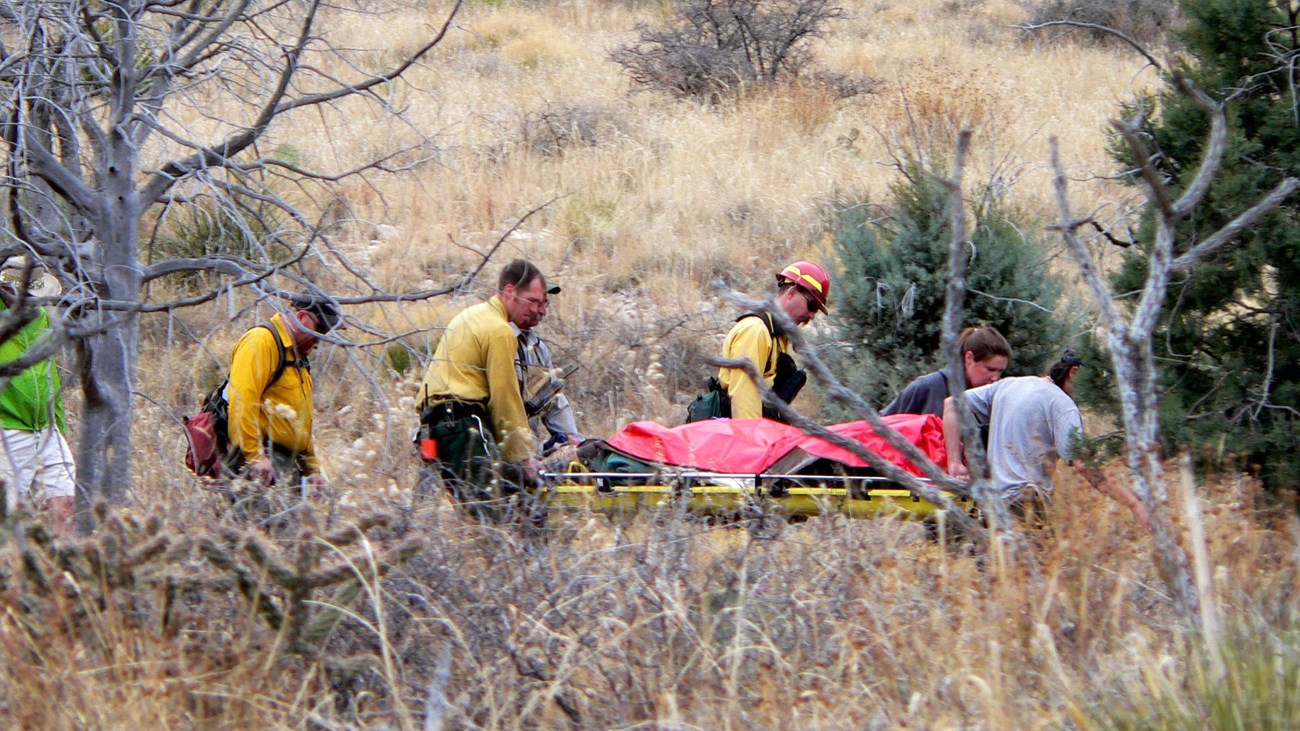
NPS/Buehler For Your SafetyKnowledge and preparation can increase your comfort level and reduce your chances of injury. Remember, you are ultimately responsible for your own safety.
Water is an Issue!There are no water sources in the backcountry. To insure you have enough water for drinking and cooking, please carry one gallon per person per day (water weighs approximately 8 lbs. per gallon). For multiple nights in the wilderness, water weight can be a considerable burden (three days and two nights at a gallon per person per day equates to about 24 pounds of water). Water is obtainable at the Pine Springs Visitor Center, Pine Springs Campground, McKittrick Visitor Center, or the Dog Canyon Ranger Station and Campground. 
Equipment Considerations
Steep Trails, Difficult ClimbsMost wilderness trips begin with an elevation gain of over 2,000 feet along exposed desert trails. This is strenuous; allow one hour per mile for ascent. Give yourself plenty of time for your hike; consider distance and elevation, your physical condition, the amount of weight you are carrying, the potential for sudden weather change, and the daylight hours remaining. Steep and rugged terrain, and lack of available water, can limit both the distance of your hike and the total number of days of your backcountry stay. Please plan your itinerary wisely. Entry and Exit LocationsGiven the variety of routes available for your hiking excursion, you might choose to enter and exit the backcountry through different trailheads. You are responsible for arranging your own transportation back to your vehicle. McKittrick Canyon is a day-use area. If your planned exit is through McKittrick Canyon, please allow enough time to be out of the canyon by the posted closing time of that location. Dog CanyonMany backpackers enjoy camping at Dog Canyon as a planned part of their itinerary. (Dog Canyon is an excellent location for acquiring additional water). If you want to overnight at the Dog Canyon Campground, the sites must be reserved through recreation.gov. Peak VisitationDuring peak visitation times (holiday weekends, spring break, fall colors) Pine Springs and Dog Canyon campgrounds fill quickly and may be full by the time you return from your backcountry trip. The developed campgrounds may be reserved in advance seperate from your backpacking itinerary. A wilderness camping permit does not guarantee a parking space; the park strongly encourages backpacking visitors to carpool and plan vehicle shuttles ahead of time. Protect Yourself from the SunToo much sun can be dangerous; take heat safety seriously. Be Alert for Venomous Snakes and InsectsWatch where you place your hands and feet, carry a flashlight at night, and shake out your shoes and clothes before putting them on. Remember, snakes and insects are protected in the park. Please do not harm or harass them. Wildlife EncountersMountain lions and black bears are a natural part of the environment; be prepared for the possibility of an encounter. Keep small children close at all times. Don't let them run ahead on trails. If you feel threatened by a lion or bear, do not run. Instead, look large and yell, scream, wave your arms, and throw rocks or sticks if necessary. Pick up small children. Report lion and bear sightings in detail to a ranger. 
Black Bear safety
While rarely seen, black bears live throughout the high country of the Guadalupe Mountains Wilderness. 
Mountain Lions
While they are rarely seen by visitors, the entirety of Guadalupe Mountains National Park is mountain lion habitat. 
Search and Rescue Policy
Visitors are responsible for their own safety. Search and rescue actions are conducted on a discretionary basis. |
Last updated: August 23, 2023
